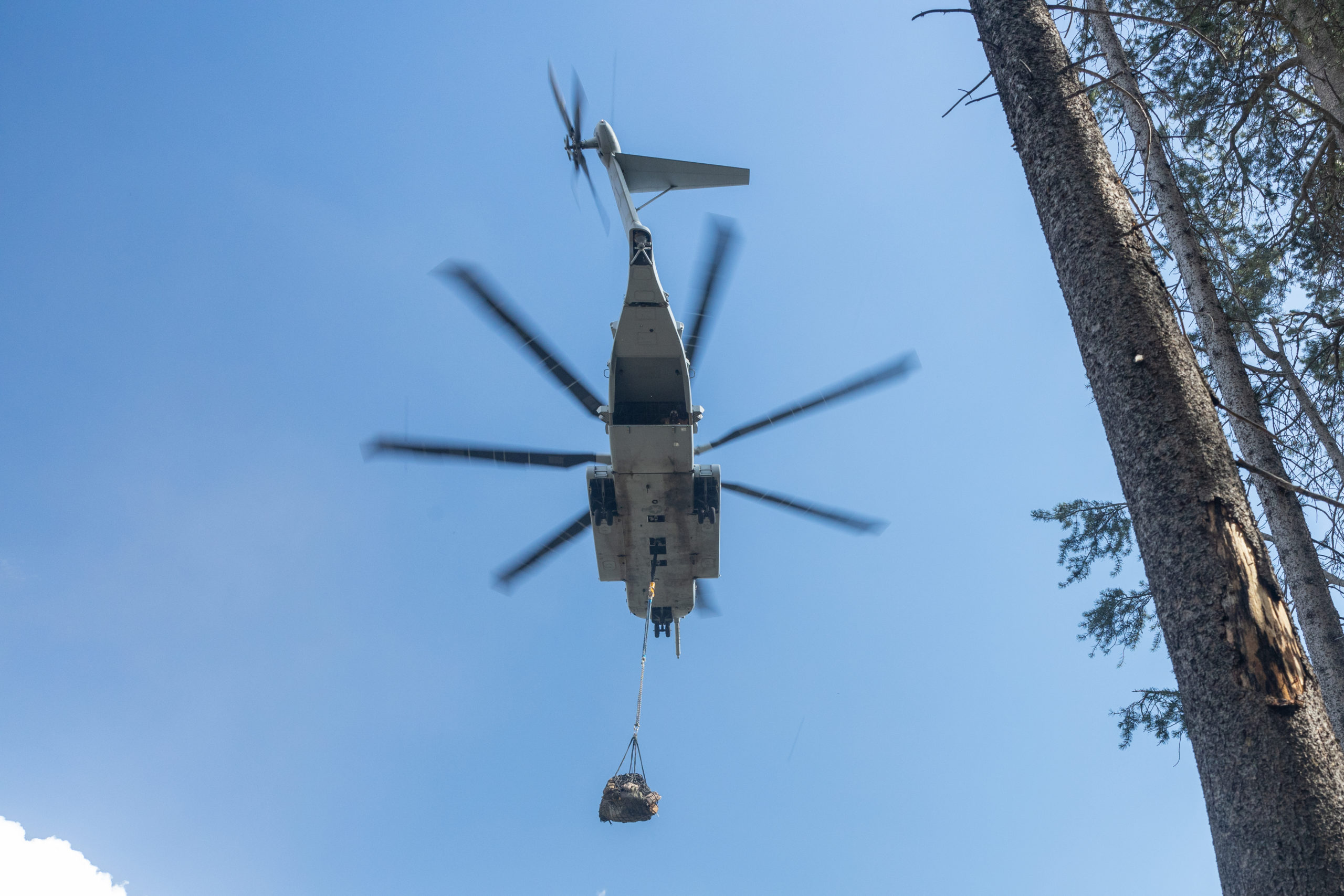By Robbin Laird
Col Kate Fleeger is the head of NAVAIR’s PMA-261 which manages the cradle to grave procurement, development, support, fielding, and disposal of the entire family of H-53 heavy lift helicopters. Col Fleeger has an impressive background in working acquisition issues, and she and her team are providing important leadership in the transition of the CH-53K to the USMC.
I last spoke with her in 2023 but had the chance to talk with her on March 1, 2024, to get an update on the CH-53K and her thoughts about its impact on the USMC.
We first started with an update on the program and where it currently stood. We focused on the production and delivery of the aircraft as our initial point.
Col Fleeger: “The aircraft we are delivering now will be the first to deploy with the Marines, and four have been delivered so far this fiscal year. Three of these are in the fleet, and one aircraft is here with us at Pax River to undergo hardware and software testing for upgrades to the original baseline aircraft. These changes will enhance the capability of the King Stallion, making it even more operationally relevant.”
And as a software upgradeable aircraft, upgrades are going to be made by design, so to speak, as the Marines gain more operational experience with the fleet and that experience is fed back to PMA-261 to inform potential changes.
With regard to this point, the aircraft is a data rich aircraft and feeds back data into the sustainment system to enable predictive maintenance. Col Fleeger argued that the CH-53K is the most advanced of any of the USMC aircraft flying today in terms of generating the kind of predictive maintenance data that could affect how you support the aircraft in the field.
As Col Fleeger put it: “With the data the aircraft generates and the tools we have available to manage and understand this data, the sustainment team has the ability to manage the logistics footprint to better position supplies to support operations.
“For example, as we send the CH-53K off the amphibious ships to a small, forward deployed detachment, we will be able to know the parts they will likely need based on the data we have collected on those specific aircraft. This is an important capability: enhancing the ability to sustain operations.”
We then discussed an important milestone coming up in 2025.
Col Fleeger underscored that in May 2025, the system development design contract will be completed. Although the baseline CH-53K is being produced, additional testing and analysis will continue until then to support long term sustainment of the aircraft. This does not mean that work on further upgrades to the platform will not continue, but the focus will be on refinements and enhancements suggested by the operational experience with the aircraft.
The shift from the initial design phases to follow-on test and evaluation informed by operational experience will be a key part of the way ahead. Col Fleeger noted that one example of this was testing for operations in different climatic conditions.
As she put it: “The more hours we spend with the fleet using this aircraft, the more we learn about how it should be employed, and the better we can refine the capabilities of the aircraft itself.”
She explained as well that they are working with Sikorsky and GE on the way ahead with the next production lots of the aircraft. She noted: “Once the FY24 budget is approved, we plan to fund Production Lot 8 for 15 aircraft, and we are concurrently planning for Lot 9, as well.”
With regard to aspects of the future of the aircraft, we discussed two.
The first was the triple hook and when it might be available for the aircraft.
According to Col Fleeger: “Not for another few years. It is not as easy as just hooking up three individual payloads. It is about understanding all aspects of the center of gravity as it relates to aircraft configuration. We must do our due diligence in data collection to ensure we are releasing safe and reliable capability to the fleet.”
The second was the ability of the CH-53K to carry payloads like maritime autonomous systems or work with air borne UAV mules in support of EABOs, for example.
She put this issue in a very interesting manner: “I would argue we should be putting the new age into the back of our helicopter. I’m talking about new technology and new capabilities in roll-on/roll-off packages and inserting them into the back of our helicopter which should be the next logical conceptual leap. We carry cargo in the back, we just we just need to think differently about the type of cargo we’re carrying and the capabilities of the cargo itself.”
Featured Photo: U.S. Marines with Marine Heavy Helicopter Squadron (HMH) 461 execute the recovery of equipment at Inyo National Forest, California, Oct. 20, 2023. The combined efforts of U.S. Marines, Sailors, and Forest Service personnel allowed HMH-461 to successfully recover a U.S. Navy MH-60S Seahawk with a CH-53K King Stallion. HMH-461 is a subordinate unit of 2nd Marine Aircraft Wing, the aviation combat element of II Marine Expeditionary Force. (U.S. Marine Corps photo by Cpl. Rowdy Vanskike)
See also, the following:
The CH-53K and USMC Transformation: Preparing for Entry into Service
Leveraging a Digital Aircraft to Shape a Sustainment Enterprise Extending to the Tactical Edge


